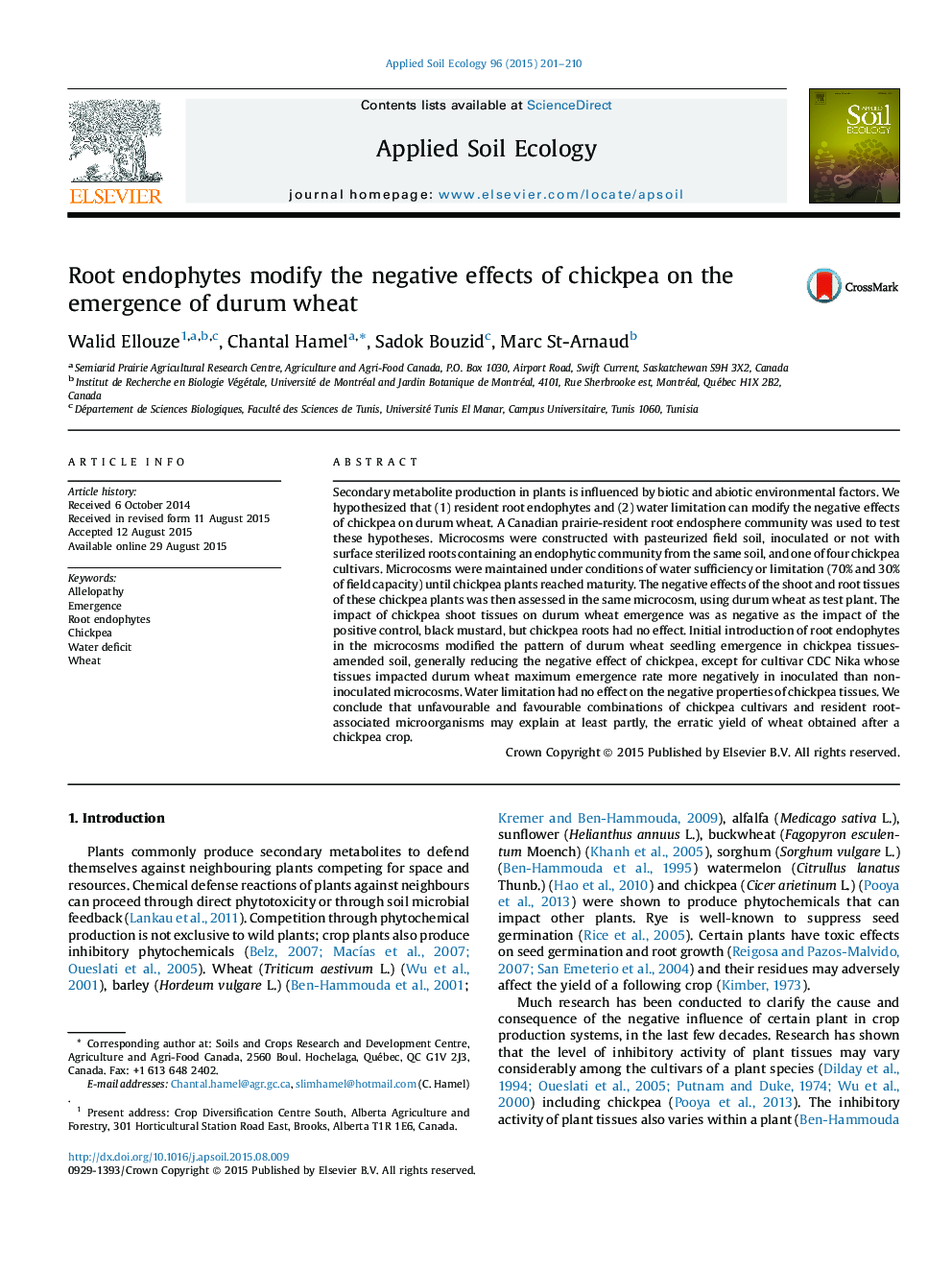| کد مقاله | کد نشریه | سال انتشار | مقاله انگلیسی | نسخه تمام متن |
|---|---|---|---|---|
| 4381912 | 1617787 | 2015 | 10 صفحه PDF | دانلود رایگان |
• The influence of endophytes and water stress on the bioactivity of chickpea tissues was evaluated.
• Bioactivity was tested on wheat emergence in microcosms.
• Chickpea shoots, not roots, negatively impacted wheat emergence.
• Root endophytes increase or decrease the bioactivity of chickpea tissues, depending on genotype.
• Water stress in chickpea did not influence the bioactivity of its shoot tissues.
Secondary metabolite production in plants is influenced by biotic and abiotic environmental factors. We hypothesized that (1) resident root endophytes and (2) water limitation can modify the negative effects of chickpea on durum wheat. A Canadian prairie-resident root endosphere community was used to test these hypotheses. Microcosms were constructed with pasteurized field soil, inoculated or not with surface sterilized roots containing an endophytic community from the same soil, and one of four chickpea cultivars. Microcosms were maintained under conditions of water sufficiency or limitation (70% and 30% of field capacity) until chickpea plants reached maturity. The negative effects of the shoot and root tissues of these chickpea plants was then assessed in the same microcosm, using durum wheat as test plant. The impact of chickpea shoot tissues on durum wheat emergence was as negative as the impact of the positive control, black mustard, but chickpea roots had no effect. Initial introduction of root endophytes in the microcosms modified the pattern of durum wheat seedling emergence in chickpea tissues-amended soil, generally reducing the negative effect of chickpea, except for cultivar CDC Nika whose tissues impacted durum wheat maximum emergence rate more negatively in inoculated than non-inoculated microcosms. Water limitation had no effect on the negative properties of chickpea tissues. We conclude that unfavourable and favourable combinations of chickpea cultivars and resident root-associated microorganisms may explain at least partly, the erratic yield of wheat obtained after a chickpea crop.
Figure optionsDownload as PowerPoint slide
Journal: Applied Soil Ecology - Volume 96, November 2015, Pages 201–210
